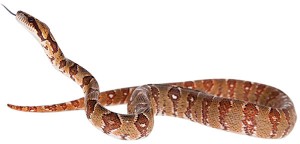
Photo: ©iStock.com/Farinosa
Snakes, especially nonvenomous species, are not to be feared. In fact, they play an important role in our ecosystem. Here are a few facts about the suborder Serpentes:
- Snakes use debris to keep cool when it’s hot outside. Eliminating wood and brick piles, mowing grass and cleaning up trash can help keep them out of yards.
- Snakes are carnivorous. Small snakes will eat insects such as cockroaches and crickets, whereas large snakes will consume small animals such as mice, rats, lizards, birds and fish.
- Some species of nonvenomous snakes eat venomous snakes.
- Snakes eat their prey live or constrict it to death, and then swallow it whole.
- A snake’s hinged jaw enables it to eat prey that is larger than its body.
- Small snakes can slither through a hole as small as the diameter of a pencil.
- Although snakes don’t have ears, they “hear” sound waves that cause vibrations in their skulls.
- Regulations regarding snakes vary in each state. Some require a hunting license and others protect certain species.
- A snake’s skin is not slimy, but dry and scaly.
- Because snakes are cold-blooded, their body temperatures change based on their surroundings.
A snake will raise its body temperature by lying in the sun and lower it by staying in the shade. - Snakes do not tolerate extreme temperatures, so they will seek shelter or debris when it’s hot or hibernate when it’s cold.
- As they grow, snakes can shed their skin several times over the course of a year. As they shed their skin, snakes become temporarily blinded because they must wait until their old skin splits at the head before they can crawl out of it.
Diane Sofranec is managing editor of PMP and can be contacted at dsofranec@northcoastmedia.net.
Leave A Comment